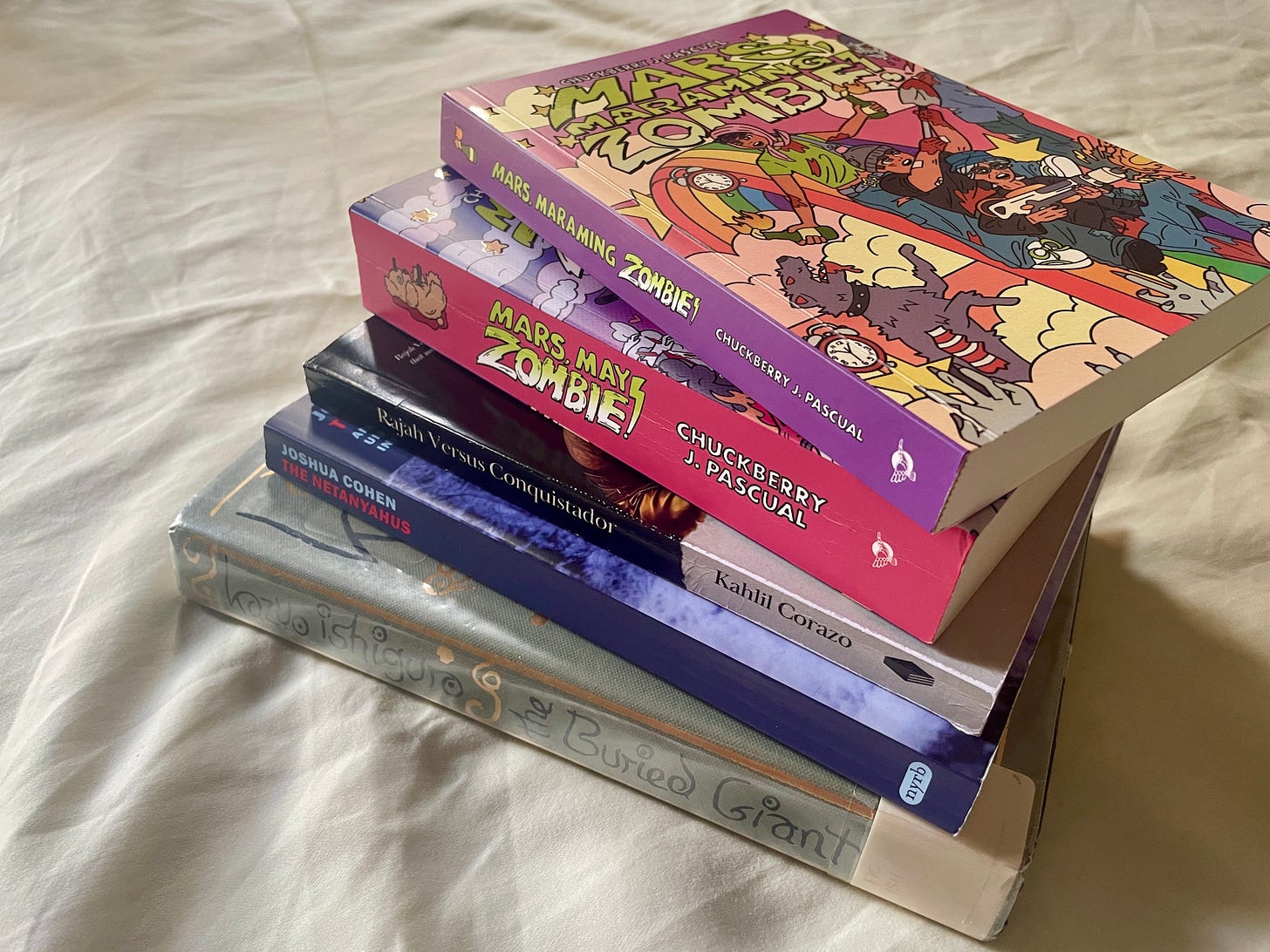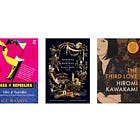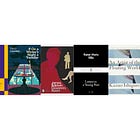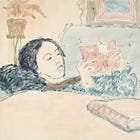September reading wrap-up 📚
books about the faults in our memory, a real-life witch trial, and how religions affects history
My friends,
For days I can’t bring myself to write anything for this newsletter. It’s been a difficult September. We found out that corrupt government officials have siphoned up to 1 Trillion Pesos in government funds. There was a massive earthquake on the last day of September that really shook me (Thank you for everyone who remembered I live in the Philippines and checked in!!). Typhoon after typhoon hit the country. Despite that, there were still good moments here and there. I got to try and cook new recipes. I joined The Trillion Peso March and felt hopeful.
I have been reading good books but I couldn’t bring myself to write about them. Nevertheless, I try. I want to have a record somewhere out there of the good books I’ve read.
Everything I read in September
The Buried Giant by Kazuo Ishiguro
An elderly couple in post-Arthurian England, Beatrice and Axl, travel outside of their village to find their son. In this fictional world, people can’t store long-term memories because of a mysterious mist. Because of this mist, they don’t remember much about their son except that he has left their village some time ago. At the start of the story, Axl starts remembering his son and feels like now is the time to find him. During their journey, they met Sir Gawain of the Knights of the Round Table; Wistan, a travelling Saxon warrior; and Edwin, a child believed to be bitten by an ogre. These unusual group travel together albeit having different travel purposes.
Early fans of Ishiguro might have been weirded out by his dabble in the fantasy genre. But fear not, the fantasy is just but a setting in which Ishiguro, again, examines the faults in our memory. It starts as adventure story with a bit of mystery in it. Little is known about Beatrice and Axl’s son and the reason for the town’s forgetfulness but Ishiguro drops hints little by little. The Buried Giant’s central theme is collective amnesia. Without saying too much of the plot, the people in this fictional world seem to have forgotten the brutal war that preceded the current state of peace. Ishiguro asks “can forgetfulness stabilize a society by burying its history? Or can we only truly achieve peace by confronting historical trauma?”
The Buried Giant is also about forgiveness. Beatrice and Axl has been married for so long but there had been times where they have hurt each other. The mist prevents them from remembering this. Because forgetting (or remembering) and forgiveness always go hand in hand, Ishiguro asks if we can truly forgive if the memory of the hurtfulness disappears. Can we really forgive if we do not remember what hurt us? Is it better to just forget than go through the pain of remembering? Can we truly heal in this way?
The only thing I didn’t like about this book is that it took too long for Ishiguro to get to his point. I was impatient for something to happen. You only get to where he is getting at at the last 50 pages of the book.
The ending is up for interpretation. Like most of his novels, if not all, he doesn’t explicitly say anything and leaves it the reader to interpret. After reading the last page, I had to go back and read some prior pages to get a sense of the ending and to form my opinion. This ambiguous ending may be frustrating to some but I think this is why his books are wonderful for book clubs. There’s so much to discuss!
My love for this book is tied with the two personal issues I was dealing while I was reading this book. It has given me clarity. How did this book know I was going through the same thing the characters were going through? I guess, you don’t find the book, but the book finds you. And for that, I will always remember this book.
The Netanhayus by Joshua Cohen
Robert Blum, a history professor of Corbin College, is tasked to join the college’s hiring committee to review the application of an exiled Israeli scholar, Benzion Netanhayu. Blum is also tasked to chaperone Netanhayu during the hiring weekend which consists of lectures, panel interviews, cocktail, and a dinner. Netanhayu shows up and is unexpectedly accompanied by his wife and three boys. This story is a fictionalized account of literary critic Harold Bloom’s meeting with Benzion Netanhayu and his family, including a young Benjamin Netanhayu - Israel’s longest-serving prime minister.
The book is short and only covers a particular event in Blum’s life and the moments preceding the said event. The Netanhayus doesn’t even show up until after the second half of the book. The book mostly talks about Blum’s campus, suburban life, and about being a Jew in America. Benzion Netanhayu delivers a polemical lecture on the Iberian Inquisition, a topic a never knew about until I read this book and a topic I encountered again in another book this month. The biggest tension in the book is the clash between Blum’s want to assimilate into American culture and Netanhayu’s hardcore Israeli nationalism.
This book is marketed as comedy. I guess it emitted a small chuckle in me here and there with one laugh out loud moment but that was it. I’ve read funnier books like Three Men in a Boat, Pride and Prejudice, and Ang Nawawalang Barangay.
When I finished the book, I didn’t particularly have a good opinion of it, especially after reading the harsh prologue. But now as I write this review, I find myself wanting to reread this again after reflecting that the themes in the book are those I rarely know about. This is why it’s important for me to not just passively read a book and move on to the next. After reading a book, I want to sit down and really write down my thoughts.
The Wax Child by Olga Ravn
The Wax Child is narrated by a wax doll created by Christenze Kruckow, an unmarried noblewoman in seventeenth-century Denmark accused of witchcraft. A wax child is a doll molded from beeswax and sometimes given hair or fingernails from the person who is about to suffer. They are sometimes used like a voodoo doll or other times like a vessel to a channel the witch’s power.
The events in this book is based on a series of real witchcraft trials that took place in Northern Jutland where Christenze and several other women were rumored to be possessed by the Devil.
The wax child is omniscient, giving the tone of the book a very eerie atmosphere. Ravn writes rhythmic proses. As a result, reading this book felt like reading a sacred, mystic text. Each chapter ends with actual spells for long-ago grimoires researched by the author. Perfect for when you want a literary spooky read.
This book scratched an itch I was looking for. My only problem with it is that it was too short and I wanted to know more how Christenze came to be rather than just reading about the events leading up to her trial. But this is just a me problem. I’ve heard the Ravn writes unique books and I can’t wait to read more of her.
Rajah vs Conquistador by Kahlil Corazo
It’s 1521 and a fleet of ships arrive in Cebu led by Ferdinand Magellan, bearing steel and the cross of an unfamiliar god. Rajah Humabon, chief ruler of Cebu, sees this as an opportunity for a great alliance to strengthen his kingdom. Magellan is offering power and divine favor after all. As Humabon prepares the stage for this great alliance, Rajah Lapu-lapu of nearby Mactan, challenges both Humabon and Magellan. Angered by Lapu-lapu’s disrespect to Magellan, and by extension, to the Spanish crown, Magellan burns Lapu-lapu’s villages and starts a war. In the end, Magellan’s fleet is outnumbered and their own suits of steel cause their defeat.
Every Cebuano knows the story of how Lapu-lapu killed Magellan, a Portuguese explorer known for leading the first expedition to successfully circumnavigate the globe. Lapu-lapu is recognized as the first Filipino hero because of his resistance against Spanish colonization. Several statues have been built to commemorate his bravery. But not many know Rajah Humabon, Lapu-lapu’s rival, who welcomed Magellan to his kingdom and accepted Christianity and the Spanish crown. In history, Rajah Humabon and his wife were the first recorded citizens of the Philippine islands to receive Christianity. It has also been speculated that Humabon only agreed to welcome Magellan as a ploy for Magellan to kill Lapu-lapu while having his hands clean. Another peculiar thing about this arrangement is that Magellan’s expedition sole mission was to find Malacca for spices and not to expand Christianity. In Rajah vs Conquistador, Corazo explores the whys of this agreement.
A few months ago I saw a book launch event for this book happening at my nearby bookstore. Unfortunately, I wasn’t able to go because I wasn’t in the city. I was interested in this book because I liked the premise of knowing what Humabon was thinking welcoming Magellan, the precedent to Spanish colonization in the Philippines. If it weren’t for this event, maybe we wouldn’t have been under the Spanish crown for 333 years. Who knows? I grew up in a small town where one of the islands, Homonhon, was the first island Magellan ever set foot on when they saw the Philippines (before Cebu). I often wondered myself if the islanders haven’t been welcoming when Magellan and his fleet stopped and rested in the island to recuperate from their travels. If they have been hostile like those angry uncontacted tribes that’s viral on the internet, would Magellan made the side trip to Cebu or go straight to Malacca? Who knows.
I rarely encounter novels with second person narration point of view. To me, they seem preachy. To those who don’t like this type of narration too, don’t be discouraged. Corazo’s writing gives voices and shapes to two historical figures I only encounter in the classroom. We get to know the reasons behind the decisions that shaped history. The book reads very much like a strategist’s journal, like that of Thomas Cromwell of Wolf Hall. Corazo portrays Magellan as a rigid disciplinarian and a devout Catholic. And I say, has a little bit of messiah complex. He felt like that his purpose in life was to really be a shepherd to these lost little sheep living in the island of Cebu. Humabon, on the other hand, is a strategist - always calculating Magellan’s every move. However, in the end, he eventually finds a brother in Magellan as they spend more time together.
There is a lot of Filipino lore in between the pages. While I was fascinated at the recognition of these lores, I was impatient to get to the end. I felt like I read this book for a long time even though the timeline in the book is barely a month. Throughout the book, I find myself dragging through some pages but, thankfully, my attention perks up again from time to time.
I liked how incredibly nuanced the events of the book was portrayed. The way Corazo gives voices to Magellan’s and Humabon’s whys was not a straightforward plot. I was touched the way Enrike, Magellan’s translator, introduced Christ to the natives through the difference between Christ’s sacrifice to save his people and paganism’s blood sacrifice to appease the gods.
“...Enrike’s explanation was fascinating: their Hesukristo commanded this because his own sacrifice - some fifteen hundred years ago in a distant place called Herusalem - was already infinite. All other blood sacrifices are unnecessary, he claimed. They are simply reliving that one perfect sacrifice..”
For my international friends who want to read this book, you can buy it on Amazon here. For my PH-based readers, you can buy it in Lazada here.
Mars, May Zombie and Mars, Maraming Zombie by Chuckberry J. Pascual
Every month I try to vary my reading in terms of where the book is set, author, themes, etc. I had initially planned to read a more serious book but when this duology arrived at my door, I had to read it as soon as possible. I know that I have to read it back to back and I know that I will surely have a good time. Reading for pleasure is the best way to read after all.
Mars, May Zombie and Mars, Maraming Zombie is a duology set in a post-apocalyptic Philippines where zombies have overruled the country. Written in Filipino, Mars, May Zombie means Mars (titular character), There’s a Zombie and Mars, Maraming Zombie means Mars, There Are Many Zombies. The country is now divided into two three different zones; Black Zones are zombie-infested areas where it is not possible for survivors to live, Red Zones where most survivors live but barely have the basic necessities like access to food, water, and electricity; and the Blue Zones - protected high-walled villages where the more affluent live normal lives unaffected by the zombie outbreak. In the second book we discover that there’s a Green Zone which I want to talk about much to avoid spoilers.
Mars, together with his Lola (Grandmother) Vicky and best friend Bey, move from camp to camp in the Red Zones to survive. One day he has grown sick of their constant moving and decides to go live in the decent and rich Blue Zone area. What he discovers there, makes him question everything he has endured so far. That there’s another way to live a decent life amid a zombie apocalypse and the unfairness of it all.
Mars is clearly a pandemic novel. I can’t help but compare the hardship experienced during the early years of COVID-19 to what Mars and his team is experiencing; the disparity between social classes; government negligence, spreading of fake news, giving out ayuda (government aid) but with agenda, among others.
Mars, at just sixteen years old, is very observant with his emotions. Unlike me, who had no inkling what I was doing or feeling at sixteen. I think this a good book to give to a teen to help them check-in with their feelings, aka anger management issues that arises from being a, well, teen.
Both books are laugh-out-loud funny. Every comedic setup is perfect. I can imagine my own friends delivering the same jokes. Pascual has built up the characters so well. There was one scene where Billie fixed her floppy hat and pink scarf first before fighting the zombies. Pascual has mentioned this floppy hat so many times prior that when I read this scene I can imagine it so well. That simple action says a lot about Bey’s character.
You can find this book and all the other books of Pascual on Shopee and Lazada.
What I want to read in October
No One is Talking About This by Patricia Lockwood - Just finished this and read with
. Loved it. She suggested I also read Rejection. Hoping to get my hands on this soon.The Thousand Autumns of Jacob de Zoet by David Mitchell - My third David Mitchell. So excited to start this.
This Mournable Body by Tsitsi Dangarembga - a book I just found out is the third book of Dangarembga’s Nervous Conditions series. Not sure if I can read this as a stand-alone? Can anyone vouch?
To Hold Up the Sky by Cixin Liu - A collection of short stories which I plan to read in between books.
Stardust by Neil Gaiman - Love the movie. Hate the author now. But let’s see.
Galatea by Madeline Miller - The only remaining Madeline Miller book I have not read.
Have you read any of the books I mentioned above? If yes, let me know which ones and if you liked them.
In case you missed this..
Everything in this newsletter is free for now. And so, every open, like, comment, or restack means a lot to me and I thank you all for your support. If you’d like to further support me, buy me a coffee so that I can continue this work. Thanks again for reading and remember, folks, to read books out of the social media algorithm!







Thanks for the review, Jam! It is heartbreaking to see the devastation in Bogo but also inspiring to see the bayanihan spirit and Cebuano grassroots DIY bootstrap mindset in action ❤️
Wow as an American I can commiserate with the world events interrupting our writing schedule and I’m so glad to hear you are ok.
I almost forgot that we originally bonded over our love for David Mitchell, can’t wait to hear your thoughts. I just finished the wax child and also loved it! And have been meaning to read the Netanyahus but it feels way too relevant to see with any objectivity right now. Great reading month for you !